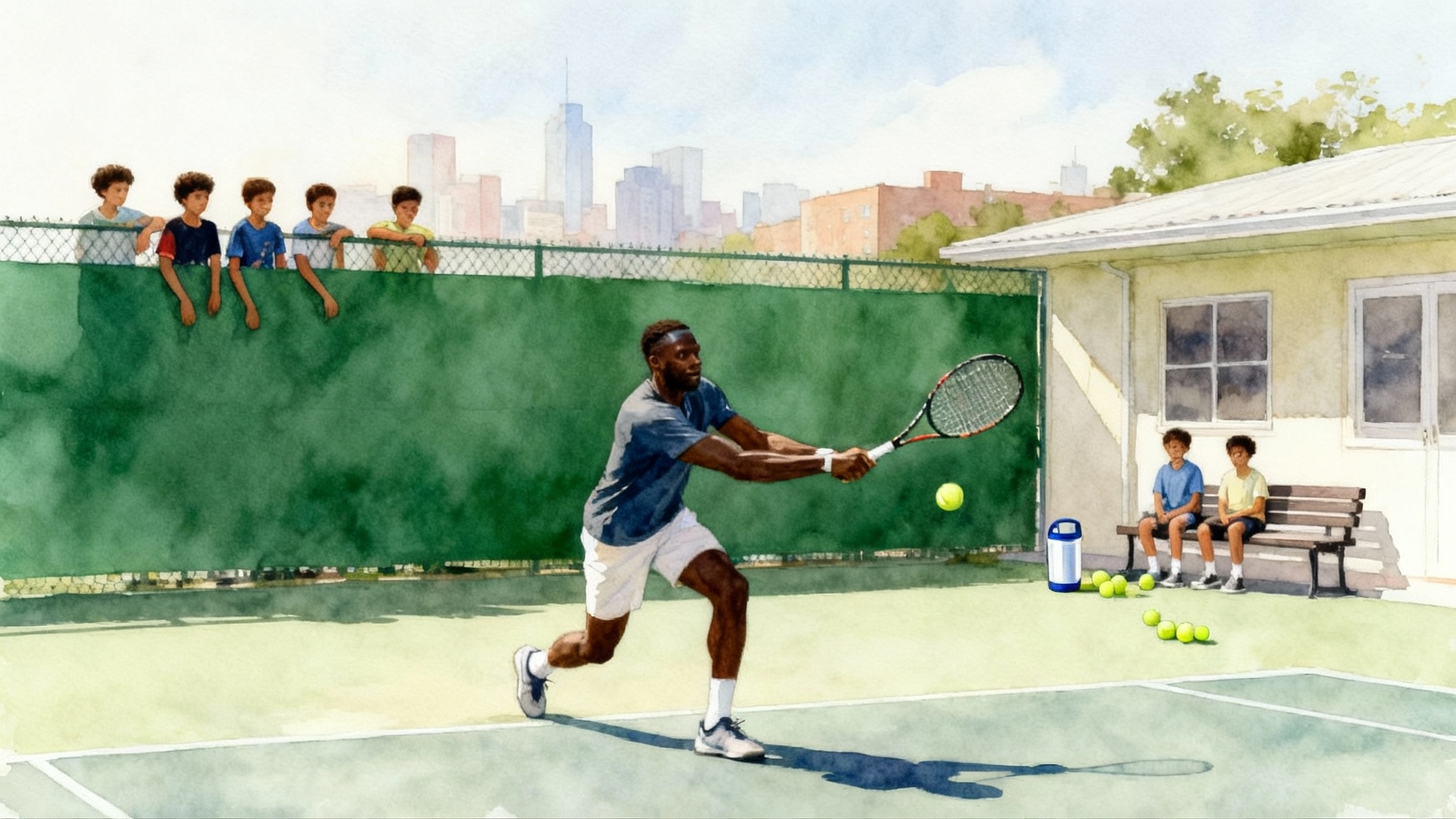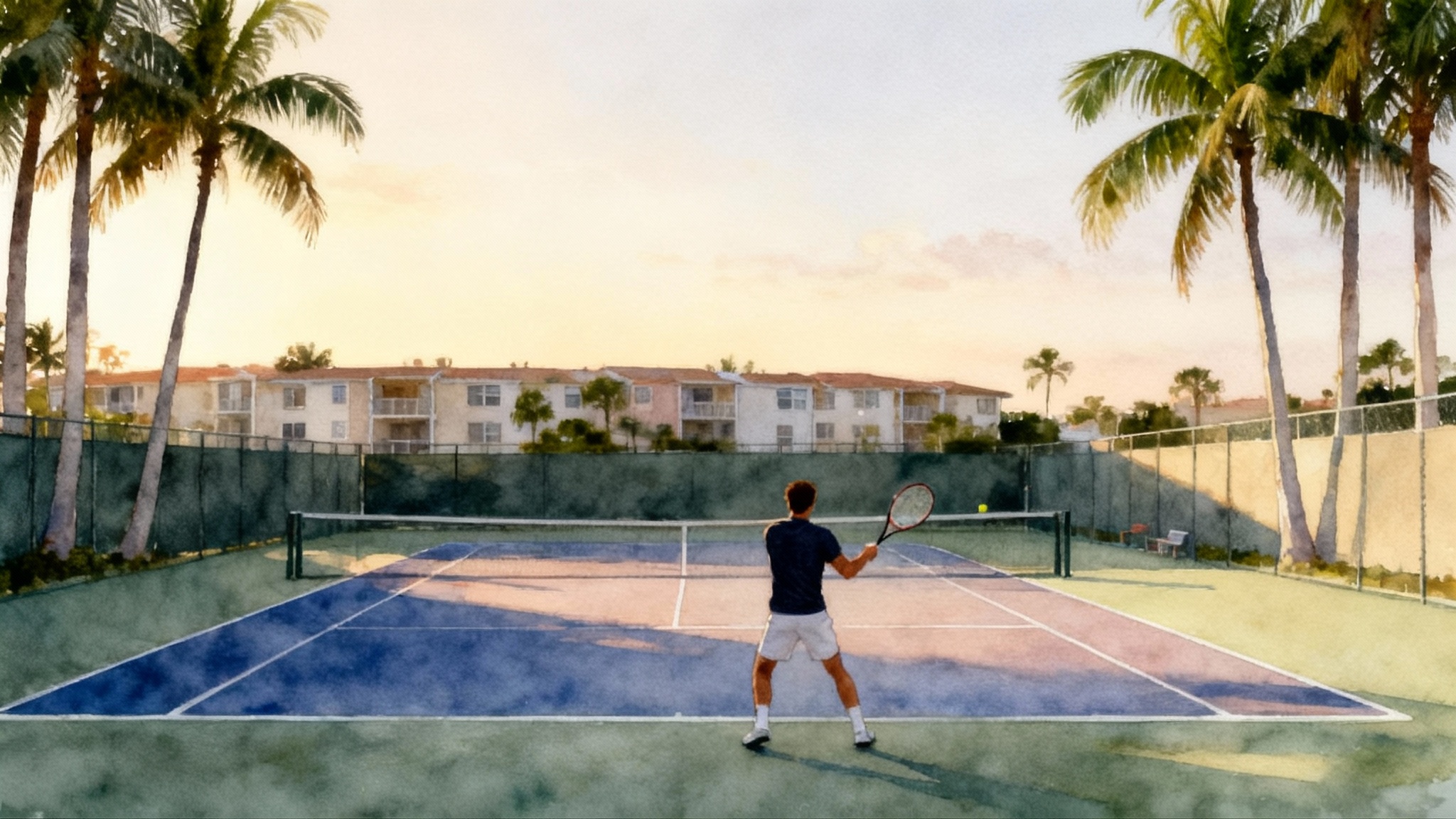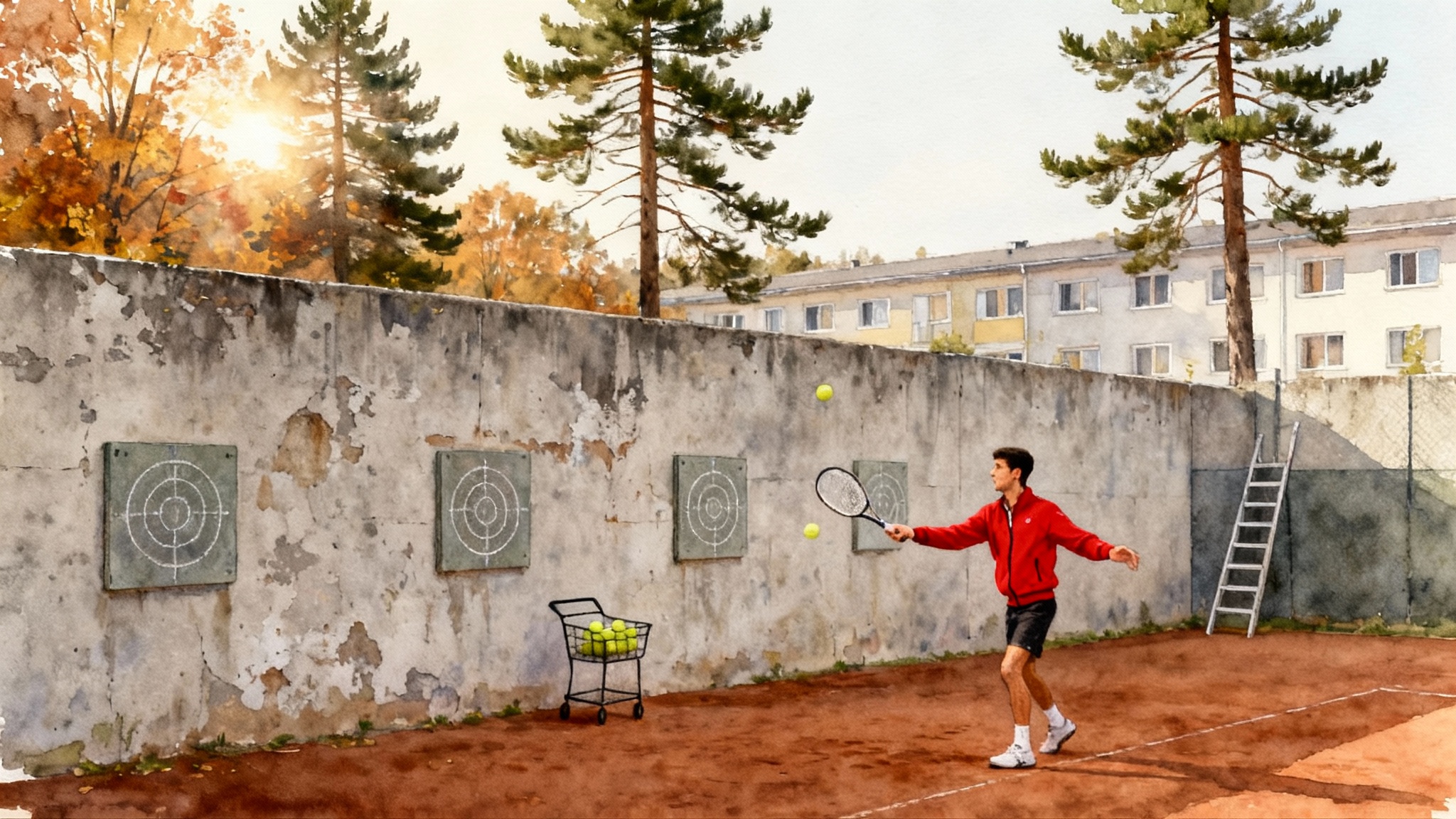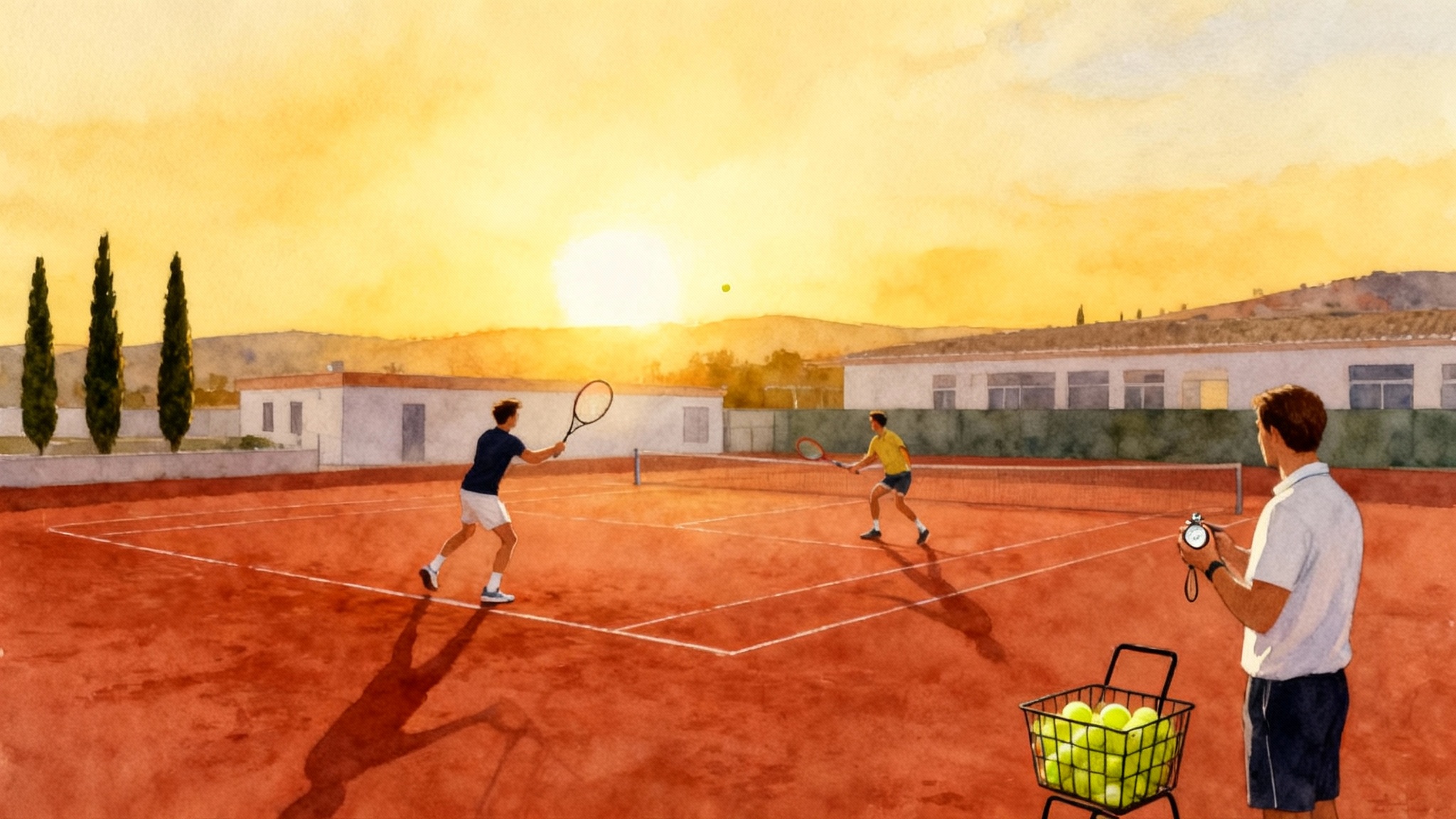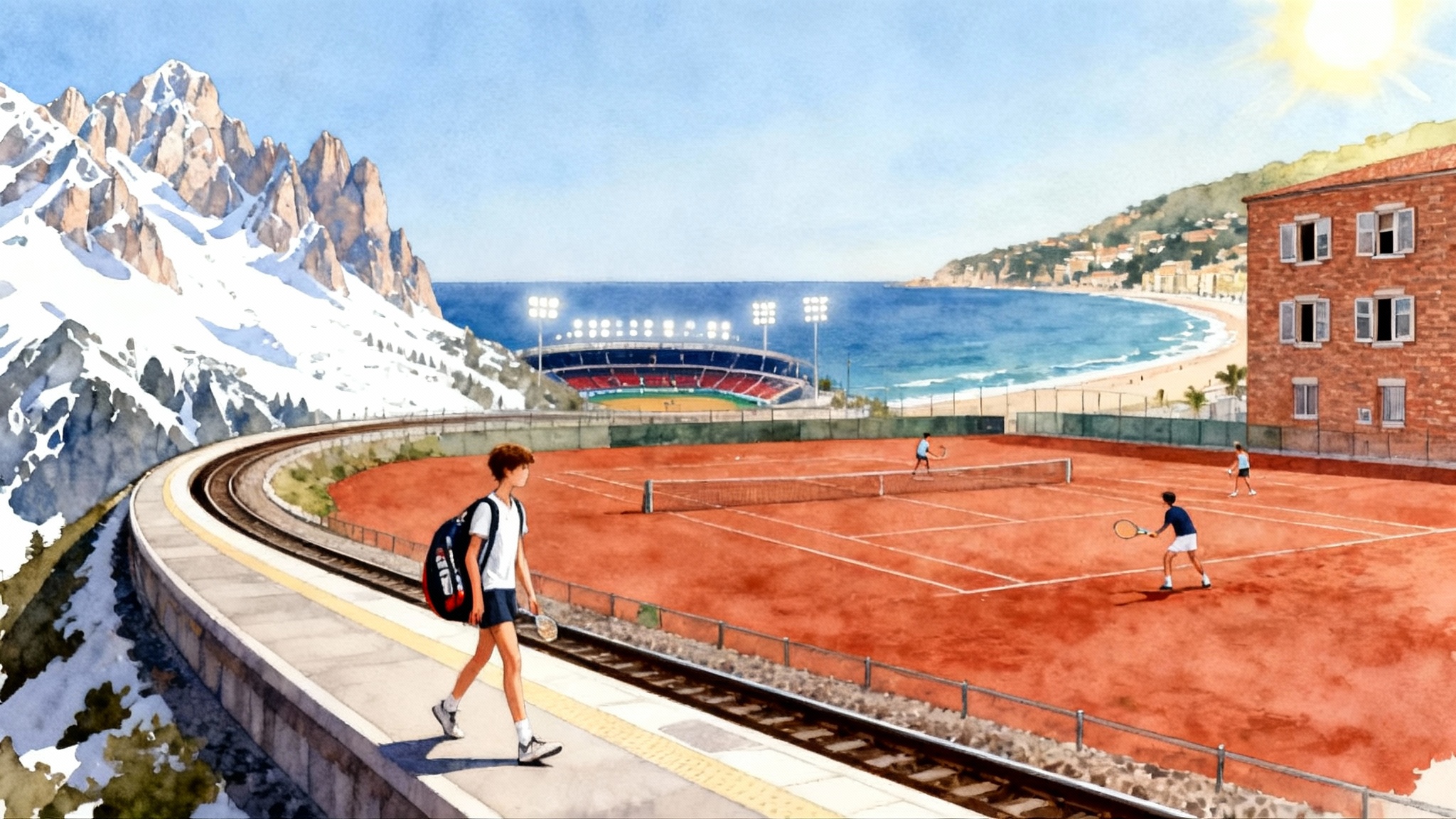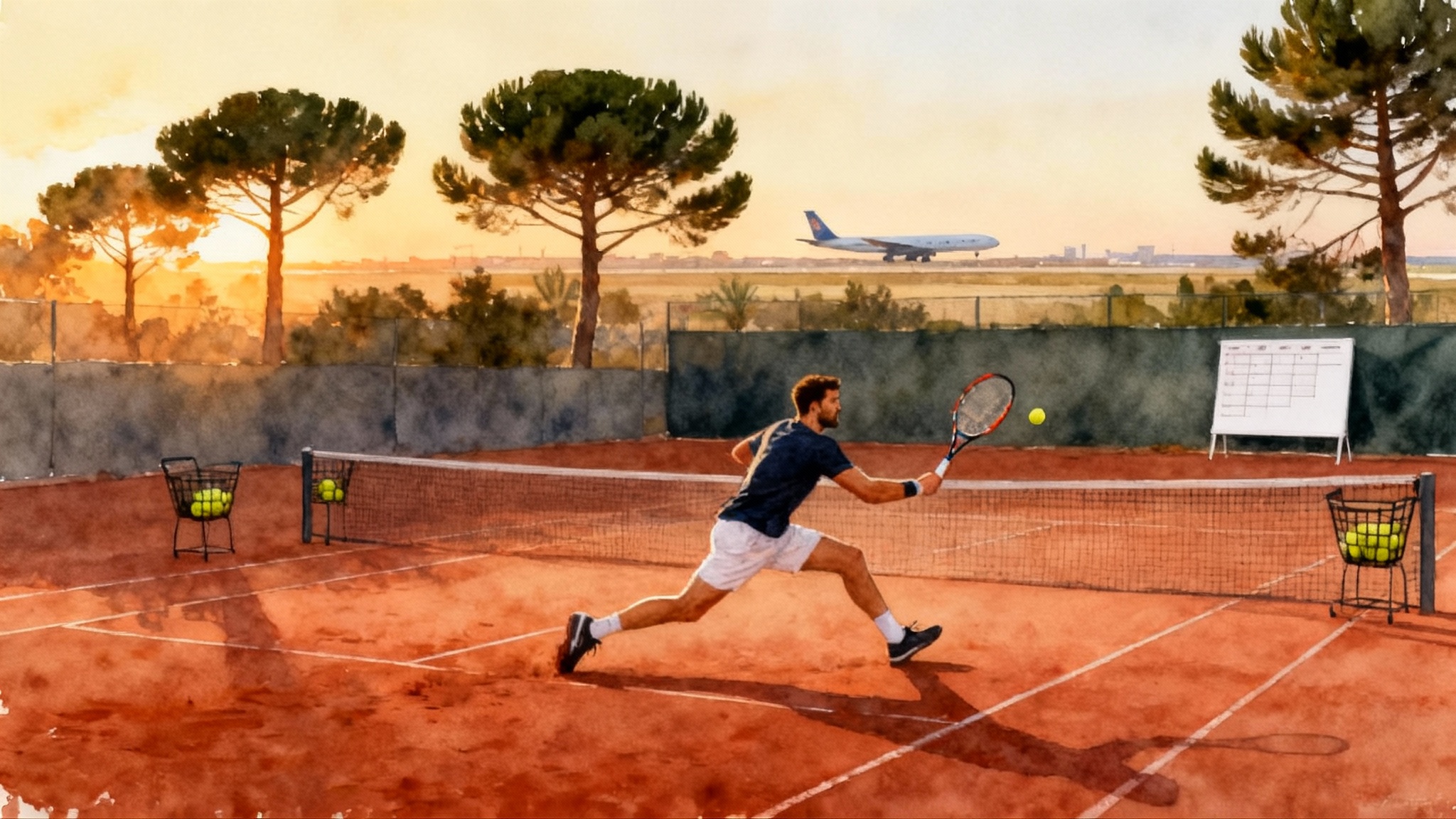From Ukraine to Brussels: How Henin Academy Shaped Svitolina
As a teenager, Elina Svitolina left Ukraine for short, focused blocks at Justine Henin Academy in Belgium. The result was a smarter baseline game built on footwork, point construction, and mental routines. Here is how parents can copy the blueprint.
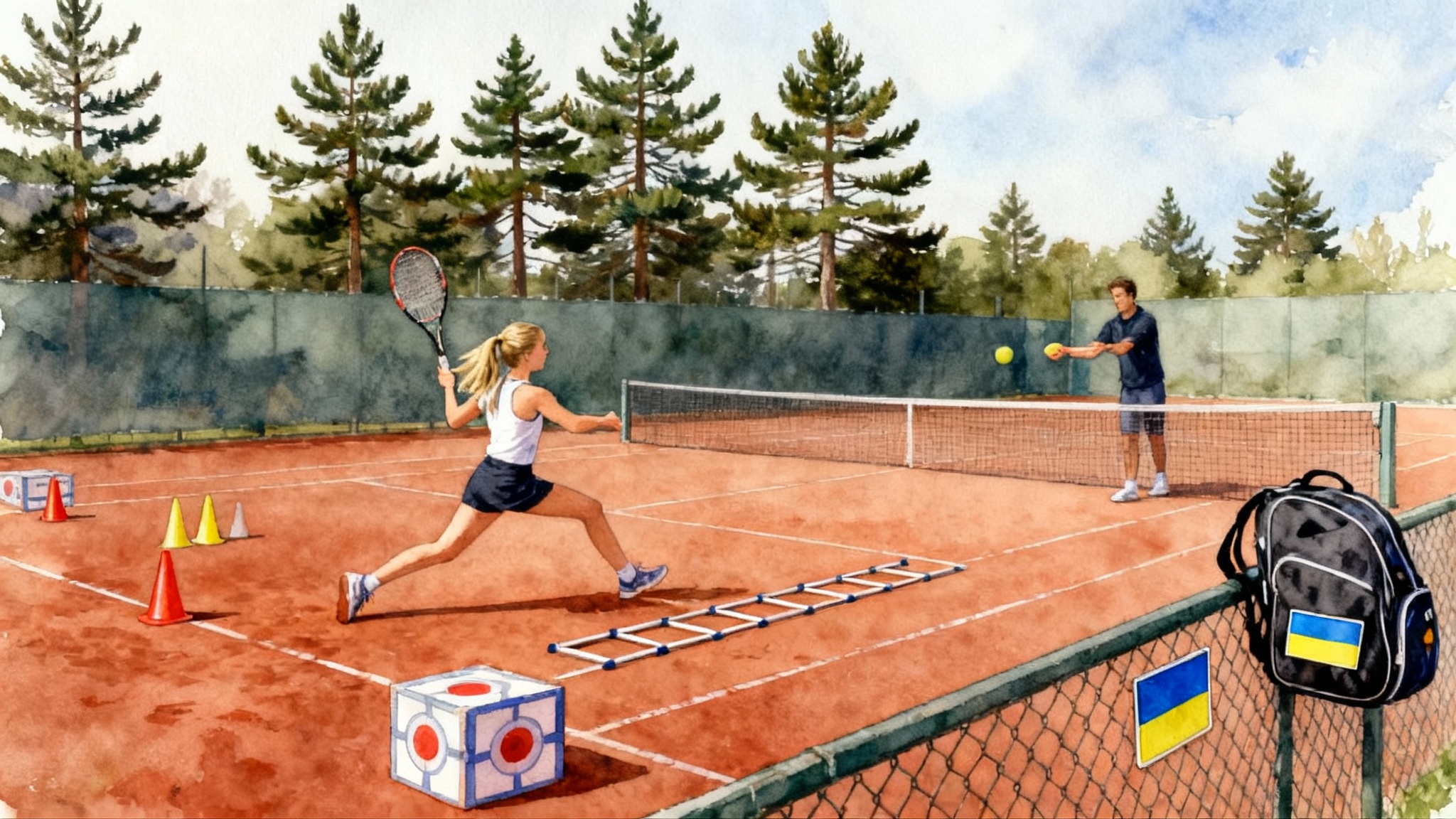
The teenage choice that reshaped a career
Picture a teenager who can already rally with grown pros. She is fast, stubborn in the best way, and hungry for more. Now place her on a red clay court in Belgium where cones, ladders, and targets turn a dream into a plan. That was Elina Svitolina in her mid teens, when concentrated training blocks at Justine Henin Academy began turning raw talent into a repeatable blueprint for a Top 10 baseline game. Years later she even brought Henin into her pro team as a short‑term consultant, a sign of how foundational those academy years had been. Svitolina has discussed this pathway in press conference remarks in Dubai.
This article unpacks what happened on court and around it. We look at three pillars that defined Svitolina’s teen block in Brussels: targeted footwork, point construction, and repeatable mental routines. Then we translate that into decisions parents can act on today, like when a short academy stay beats full‑time boarding, how to combine home coaches with specialist camps, and how to turn practice patterns into match‑ready weapons.
From Odesa to Kharkiv to Brussels
Svitolina’s path did not jump in a straight line from local courts to international trophies. Early on, a private sponsor in Ukraine helped her move from Odesa to Kharkiv for better daily training. Only later did she shift to Belgium for a multi‑year academy phase, then to southern France for another development block. As a rising pro she outlined that sponsorship step, the limited federation support at the time, and the sequence of moves that followed in a Sports Illustrated Q&A from 2014.
Rule of thumb for families: use each move to unlock the next constraint. First, secure consistent local training and competition. Second, add specialist blocks that target gaps local settings cannot address. Third, when results and maturity justify it, bring the best of that specialist environment back into the regular week.
What Henin’s academy sharpened first: feet and base
Watch Svitolina at her peak and you notice what coaches call a low, elastic base. The knees load early, the split step is on time, and the first step is automatic. Belgian academies, including Henin’s, are known for demanding clean movement before layering power. If the feet arrive early with balance, the hands can be late and still win points. If the feet arrive late, even perfect technique is forced.
Here is how that looked in training terms and how you can borrow it:
- Footwork ladders with racquet in hand: 30 seconds on, 30 seconds off, three sets each of in‑in‑out, icky shuffle, and crossover back. Finish each set by shadowing an open‑stance forehand with a wide base, then a recovery shuffle back to center. The racquet matters because it sets shoulder alignment.
- Two‑ball figure eights: Feed two balls to the corners in quick succession. The player must split, sprint, hit with height crosscourt, recover, then repeat. Count clean recoveries to center as the score. This favors balance over winners.
- Baseline to service‑line hover: Rally crosscourt, but after every third ball the hitter must step to the service line, shadow a volley split, then retreat before the next feed. The goal is to train approach readiness without changing the point pattern.
Track three metrics each week: average time to first step on a coach clap, number of balanced recoveries per drill set, and error rate under fatigue in the last two minutes. Improvement here is a leading indicator of match toughness later.
Point construction that travels
Svitolina wins with depth, change of height, and the patience to repeat a pattern until it breaks the other side. An academy can hardwire that by making construction the daily conversation.
Three patterns that build a Top 10 baseline identity:
-
Two cross, one line. Start neutral. Hit two heavy crosscourt balls that push the opponent off the sideline, then take the third ball down the line behind them. Coaching cue: height off the net on the cross, then a lower, flatter line drive into the open lane. Scoring: two points for finishing to the line after two controlled crosses, one point for any other winner, minus one for an unforced error on the down‑the‑line ball.
-
Forehand change through the middle. Rally deep crosscourt backhands until the opponent shows an open shoulder, then change with a firm forehand to the center hash. The aim is to take angle away, not paint a sideline. That resets the geometry and often buys time for a court invasion on the next ball.
-
Height to break rhythm. Build with two heavy topspin balls above shoulder height to the opponent’s backhand, then follow with a flatter, skidding shot to the forehand. This is about changing contact height to draw a short ball, not about a direct winner.
Parents can turn these into a home plan. Print targets with painter’s tape. Mark two crosscourt landing zones three feet inside the baseline and sideline, and a long rectangle down the line two racquet lengths from the sideline. Play first to 11, but the winning shot only counts if it lands in the tape zones.
For more examples of construction-first development, see how the Rafa Nadal Academy forged Casper Ruud and how the Pilic Academy forged Novak Djokovic.
Mental routines that reduce noise
Svitolina has often described herself as demanding on the practice court and detail oriented. That fits the academy model she experienced, where routines sit beside drills. A routine is an if‑then rule for the brain, not a pep talk.
Borrow this three‑step between‑point routine any junior can learn in a week:
- Breathe: one slow inhale and exhale while briefly turning the back to the net to reduce visual triggers.
- Release: a physical gesture that marks the previous point as finished. Many players use a ball bounce with a quiet word like next.
- Reset: one sentence plan for the next point, spoken quietly. Example: First serve body, forehand to backhand corner.
Embed it with a simple game. Every time a player breaks the routine after an error, the opponent gains a bonus point. Pair this with a one‑page match journal divided into three boxes: What worked, What unraveled, What I will try in the first two games next time.
The layered coaching model behind the scenes
Svitolina did not swap one coach for another every time she chased a new skill. She layered. As a teenager she trained for extended blocks at Henin’s academy, returned to her base environment, then later added Henin as a consultant while keeping a primary coach. That mix of continuity and specialization let her evolve without losing her identity.
Families can copy the structure without star names. Think in roles rather than people: a daily coach who knows the player’s habits, a specialist who fixes one limiting factor per block, and a mentor who shows up a few times a year to reset standards and review film. One person can wear two hats, but do not ask one person to do all three at once. For a different model of role layering inside France, explore the All In Academy in France.
When a short, intensive academy stay beats full‑time boarding
A two to twelve week academy block can outperform full‑time boarding when the player already has a stable home base and the target is specific.
Choose a block when:
- The player loses close matches from the same weakness, like late footwork to the backhand corner or poor second serve decisions.
- The home coach is capped by facilities or sparring partners, not by knowledge.
- School rhythm and family stability are strong and you do not want to disrupt them.
Make the block work:
- Define one theme. For example, first step to the open‑stance forehand. Build drills, video, and match scenarios around that theme only.
- Set pre‑block and post‑block tests. Time the first step, chart plus‑one errors after second serves, and record patterns in two practice matches before and after.
- Plan the handover. The academy should write a one‑page transfer plan for the home coach. Without a handover, gains fade in four weeks.
Go full time when: daily high‑level sparring is unavailable locally, the family cannot support the travel schedule, or school can be integrated on campus without compromising rest.
How to leverage sponsor and federation support
Svitolina’s move from Odesa to Kharkiv at 13 was enabled by a private sponsor in a context of limited federation backing, then leveraged into Belgium and later France. Build a ladder of support, not a single deal.
A practical playbook:
- Start local and specific. Ask your regional tennis association about travel stipends tied to performance bands.
- Create a results snapshot, not a glossy brochure. One page with recent wins, ranking trend, and two video clips that show a before and after of a technical cue.
- Offer defined inventory. For a small business sponsor, specify what they receive: logo on training gear, two clinic days for staff, and quarterly progress email.
- Diversify rather than chase one hero sponsor. Combine a small federation grant, a local sponsor, and a family friend loan into a budget that survives if one piece drops.
Turning academy drills into match‑ready weapons
The most common failure point after a great camp is the first tournament back. The player tries to use every new idea at once and leaks points. Build a bridge week instead.
- Week 1 after camp: play only construction patterns in practice sets. Ban new trick shots. Score a bonus point for finishing with the camp’s main pattern. Video one set and count pattern attempts versus pattern successes.
- Tournament week: choose two non‑negotiables for round one. Example: start every return game two meters behind the baseline to give the swing time, and after every deep crosscourt, look for a line change only if the opponent’s outside foot lands outside the doubles alley. If the two rules fire automatically, add a third in round two.
- Pressure rehearsal: two days pre‑event, play service games from 0‑30 down only. The brain learns to associate that score with a rehearsed plan.
Serve plus one is the fastest place to see gains. Set cones in the ad court at body and backhand targets. Serve to body, then drive a forehand to the backhand corner high and heavy. Score ten‑ball series and track how often the second ball clears the service line by two racquet lengths.
Balancing school and travel without losing either
Academy blocks stress school routines. The fix is rhythm. Build a default week and protect two anchor windows.
- Default week during a block: morning fitness and footwork, late morning drilling, early afternoon school session of ninety minutes, late afternoon set play, evening homework and video review for thirty minutes. Keep the school window at the same time each day.
- Two anchor windows: one long school block on the midweek rest day, one long block on the travel day. Pre‑download assignments and readings to avoid weak hotel internet. Use the commute to watch video breakdowns at 1.25 speed and take three timestamps to discuss with the coach.
- Exams: if possible, stack academy blocks outside exam windows. If not, reduce total training hours by twenty percent during exam week and raise the proportion of video and mental routines so the brain keeps rehearsing without overload.
A three‑month blueprint families can copy
You do not need Brussels to benefit from the Brussels playbook. Here is a ninety‑day plan that echoes that development arc.
- Days 1 to 7: baseline testing and theme selection. Film two sets, record first step time from clap to movement on both sides, chart second serve plus one errors, and agree on one theme.
- Days 8 to 21: short academy block or simulated block at home. Two technical sessions per day, one construction set, and nightly journal with three bullets. End with a written handover to the home coach.
- Days 22 to 35: integration with the home coach. Keep the same drills, reduce volume, and move the focus to decision making. Two practice matches with pattern scoring. For additional inspiration, study how Elite and All In shaped Andreeva.
- Days 36 to 42: competition week. Two non‑negotiables, pressure rehearsal from 0‑30, and strict between‑point routine.
- Days 43 to 63: recovery and refinement. One day off per week, two strength sessions, and one technical audit with slow‑motion video.
- Days 64 to 77: second short block. New micro‑theme, same structure.
- Days 78 to 90: competition phase. Repeat the rule of two non‑negotiables and update the handover document for the next cycle.
What Brussels left behind
By the time Svitolina began climbing the tour rankings, the habits from those Belgian courts were visible. Feet first. Patterns before flash. A routine that could survive a tight scoreboard. Later, she layered more power, varied serve patterns, and added mentorship stints without changing who she was on court.
For families facing a similar decision, the lesson is specific. Do not ask an academy to fix everything. Ask it to fix one thing in a way the player and the home coach can repeat for months. Do not chase names. Chase fit. Do not push for full‑time boarding if you can get the same gains with a planned, measurable block.
Build the ladder one rung at a time. A teenager who learns to arrive early to the ball and repeat a pattern under pressure is building something that lasts.

